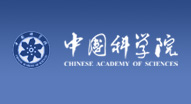报告一
报告题目:光学活性螺旋链高分子
报 告 人:宛新华 教授 北京大学 化学学院高分子科学与工程系
报告时间:6月27日(星期一) 下午15:00
报告地点:理化楼三楼多功能厅
报告人简介:
宛新华,北京大学化学学院高分子科学与工程系系主任,国家杰出青年基金获得者、教育部跨世纪优秀人才培养计划和中央七部委“新世纪百千万人才工程”国家级人选。宛新华教授研究兴趣及领域包括:高分子可控合成,液晶高分子,光学活性高分子,近红外波段吸收/发光高分子,有机无机杂化材料,高性能高分子材料,刚柔嵌段共聚物/低聚物的多层次自组装,具有控制结构、确定形状的高分子的合成及功能化。发表SCI收录论文近200篇,撰写6本英文书的章节。现为
Australian Journal of Chemistry、《高分子学报》副主编,
Chin. J. Polym. Sci.、
Science China Chemistry、《中国科学化学》、高分子材料科学与工程编委。曾获得1997年国家自然科学三等奖,1998年国务院政府特殊津贴,1999年教育部跨世纪优秀人才培养计划,1999年高等学校优秀青年教师教学与科研奖励计划基金暨首届“高校青年教师奖”,2003年获国家杰出青年基金,2004年入选首批新世纪百千万人才工程国家级人选2007年获中国化学会高分子科学创新论文奖。
报告二
报告题目:Nylon-3 Polymers as Emerging Biomaterials
报 告 人:刘润辉 教授 华东理工大学 材料科学与工程学院
报告时间:6月27日(星期一) 下午16:00
报告地点:理化楼三楼多功能厅
报告人简介:
刘润辉 华东理工大学,材料科学与工程学院教授,“东方学者”上海市高校特聘教授
1997/09–2004/06,华东理工大学,(原)化学与制药学院,学士、硕士
2004/08–2009/08,Purdue University(普渡大学),化学系,博士
2009/09-2010/03,California Institute of Technology(加州理工学院),博士后
2010/04-2014/12,University of Wisconsin–Madison (威斯康星大学-麦迪逊校区),博士后
2014/12-至今,华东理工大学,材料科学与工程学院,教授
主要研究方向:
模拟天然蛋白功能的合成高分子生物材料,包括:
1. 功能化聚合物单体的合成;多功能高分子材料的制备及合成方法研究
2. 生物相容、生物可降解高分子材料的研究与开发
3. 抗细菌、抗真菌生物材料的研制与作用机理研究
4. 具有细胞黏附、细胞选择功能的生物材料研究及在组织修复中的应用
5. 抗非特异性蛋白吸附及微生物生物膜形成的防污材料研究及在生物医学工程领域的应用
6. 蛋白类及小分子药物的体内传输和可控释放研究
报告摘要:
Natural proteins/peptides are widely used in biomedical applications, but are still suffered from their susceptibility to proteolysis, high price and difficulty in large-scale synthesis. Nylon-3 polymers (poly-β-peptides) have a poly-amide backbone that is similar to that of natural proteins/peptides. Therefore, nylon-3 is likely to be biocompatible as emerging biomaterials.
We studied nylon-3 as synthetic mimics of Host defense peptides (HDP). These nylon-3 copolymers are normally composed of a hydrophilic/cationic subunit and a hydrophobic subunit to mimic two key characteristics of HDP, net positive charge and amphiphilicity. Nylon-3 polymers display potent and broad-spectrum activity against multiple bacterial species, including methicillin-resistant S. aurues (MRSA) and vancomycin-resistant E. faecium (VREF), as well as low hemolytic activity and and cytotoxic. Moreover, neither E. coli nor MRSA developed resistance toward nylon-3 after repeated treatment. We are also surprised to discover nylon-3 polymers with potent and selective activity against multiple strains of C. albicans, the most common pathogenic fungus in humans. In addition to activity against planktonic fungal cells, nylon-3 also inhibits the formation of C. albicans biofilms and is active against mature C. albicans biofilms.
Nylon-3 can also mimic the function of ECM proteins/peptides to have cell-adhesive functions. The best nylon-3 support cell adhesion even better than the gold-standard RGD peptide. The cell-adhesion of nylon-3 was found to be mediated by proteins. Further study discovered that nylon-3 can selectively support the growth of only endothelial cells rather than smooth muscle cells and fibroblast cells. The mechanism of nylon-3’ cell-selectivity was different from that of the ECM proteins/peptides. The structural diversity, high stability and easy preparation of nylon-3 polymers suggest that members of this class may prove to be useful biomaterials in the future.




